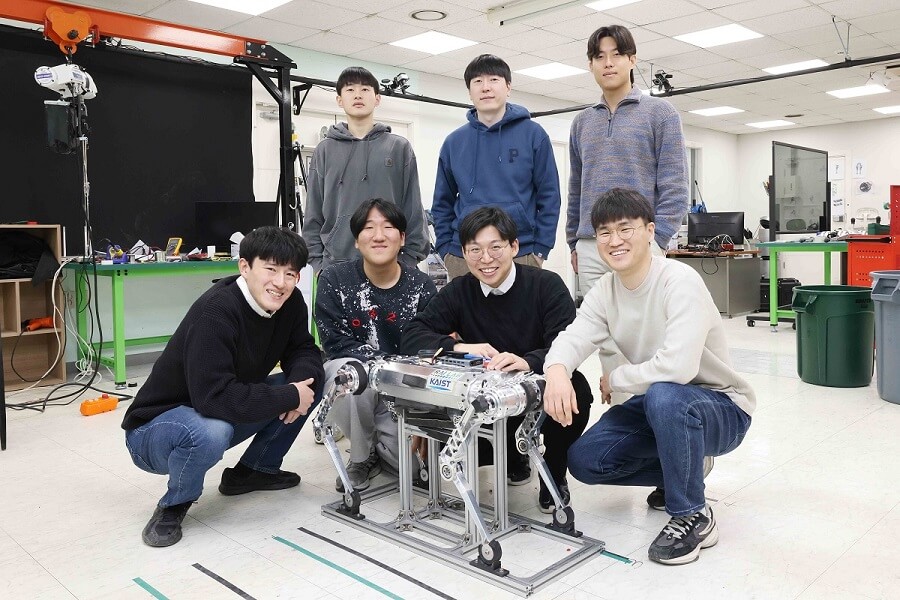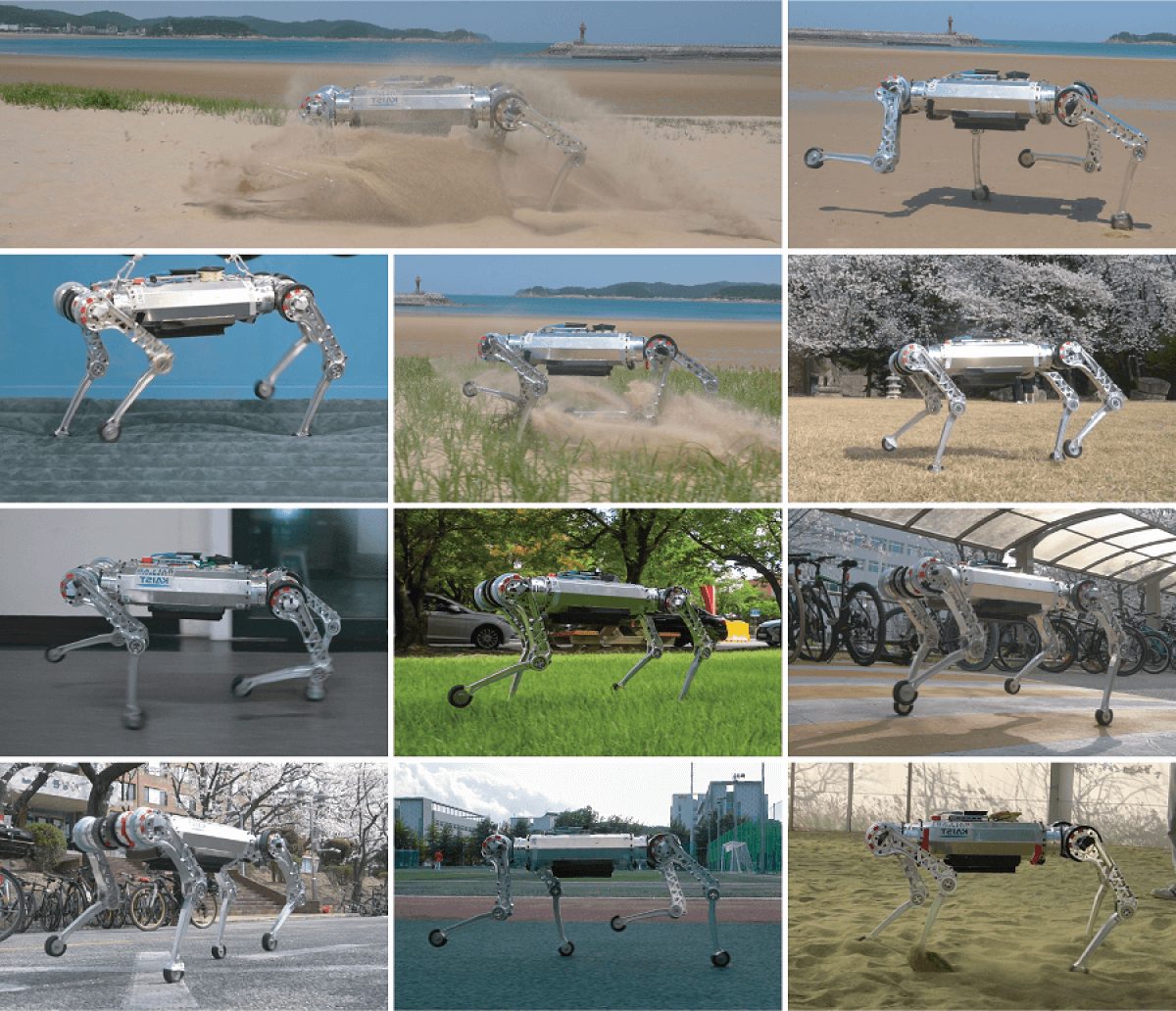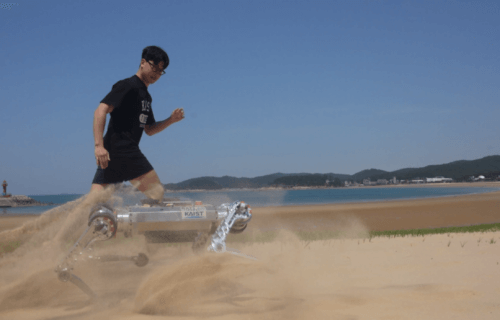DAEJEON, South Korea — Jogging along the beach with your robotic dog might seem like something out of a sci-fi film, but scientists in South Korea are making this scene a reality. The robot dog, called RaiBo, is the first capable of navigating uneven surfaces, running along sandy dunes at three meters per second.
The team from Korea Advanced Institute of Science and Technology (KAIST) used advanced neural networks to allow the dog to make judgements on the run. It is able to adapt to various types of ground without prior information while walking at the same time.
Study authors say the trained neural network controller could expand the scope of how people use four-legged walking robots since their new prototype is tougher and can deal with changing terrain. This includes the ability to move at high speeds over a sandy beach and walking on soft grounds like an air mattress without losing its balance.
Led by KAIST’s Department of Mechanical Engineering, the study published in the journal Science Robotics uses reinforcement learning — an AI learning method used to create machines that collect data on the results of various actions in an arbitrary situation. It then uses that data to perform various tasks.

How did the robot learn to walk on any surface?
Since the amount of data needed for reinforcement learning is so vast, scientists have to use a method of collecting data through simulations that approximate physical behaviors in a real-world environment. The team developed a technology to simulate the force encountered by a walking robot while walking on granular materials like sand.
However, the performance of the learning-based controller fell off dramatically when the environment differed from what the robot was preparing for in the learned simulation environment. To counter this, the team tested the robot dog in an environment similar to the one in the data collection stage.
The research team defined a contact model that predicted the force generated upon contact from the motion dynamics of a walking dog based on a ground reaction force model that factored in the additional mass effect of sand — defined by previous studies. By calculating the force generated from one or several contacts at each time step, researchers were able to efficiently simulate a changing terrain.
They then combined this with an artificial neural network structure that predicts ground characteristics by using a recurrent neural network that analyses time-series data from the robot’s sensors. Researchers applied all of this to RaiBo, which the team built by hand.
RaiBo was able to run at up to 3.03 meters per second on a sandy beach where the robot’s feet were completely submerged in the sand. Even when they took the robot to an environment with a harder surface, such as grassy fields and a running track, it was able to run stably by adapting to the characteristics of the ground without any additional programming.

Additionally, the dog could rotate with stability at approximately 90° per second on an air mattress and demonstrated its quick adaptability even when a surface suddenly turned soft. The developers hope it will lead to robots capable of literally thinking on their feet and performing practical tasks on a range of different and unpredictable terrains.
“It has been shown that providing a learning-based controller with a close contact experience with real deforming ground is essential for application to deforming terrain,” says first author doctoral student Soo-Young Choi in a media release.
“The proposed controller can be used without prior information on the terrain, so it can be applied to various robot walking studies.”
Watch RaiBo go for a run in the video below:

South West News Service writer Jim Leffman contributed to this report.
